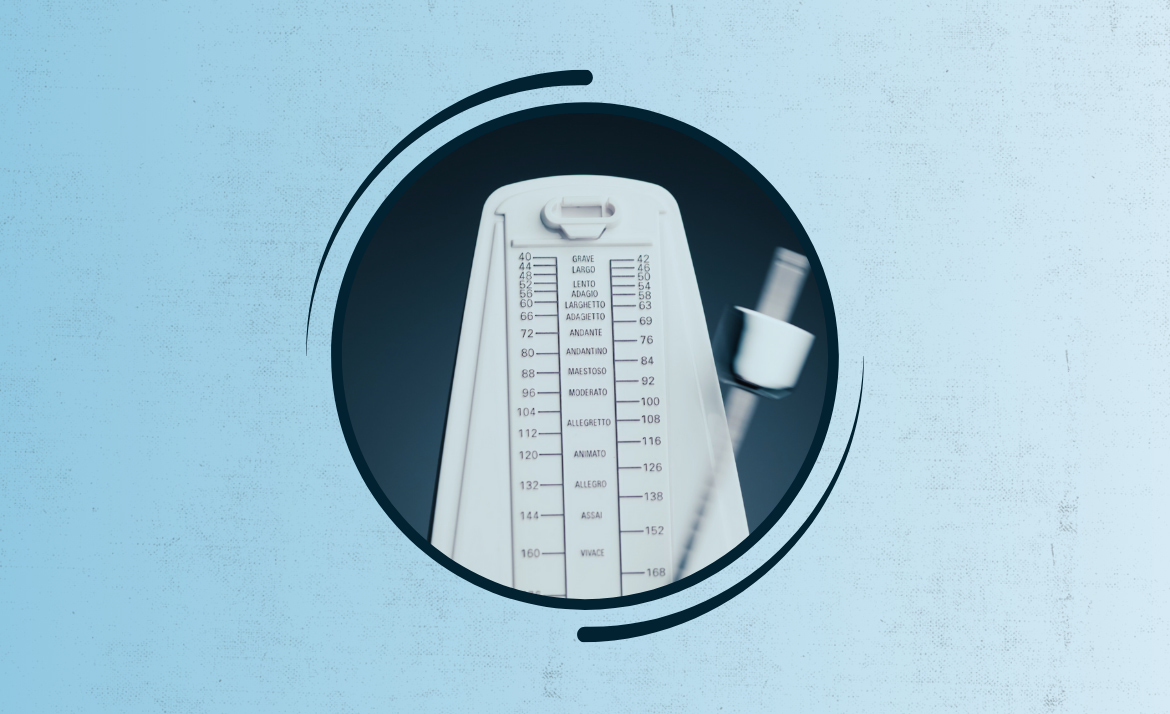Imagine picking up your sticks and grooving along, yet something feels off. The band watches the drummer, searching for the pulse. Understanding time signatures removes this confusion and guides drummers to confidently lead the beat.
Every style of music relies on structure, and drum parts build the rhythmic foundation. Without clarity on why time signatures matter, fills and accents won’t fall where listeners expect. This affects how tight your grooves sound and how well the band locks in.
Explore the clear, practical rules and strategies that make time signatures easy for any drummer, regardless of experience. From reading charts to improvising live, the insights below will make timing second nature in every groove you play.

Establish Consistent Drum Patterns by Decoding Simple and Compound Time
Clear knowledge of time signatures gives drummers the ability to set and maintain a steady pulse song after song. Choosing the correct pulse guides the rest of your playing and ensemble.
Think of the time signature as a recipe. The numerator tells you the number of beats in each measure; the denominator tells you what note value represents one beat. For drummers, this is crucial for deciding which hand or foot plays when.
Simple Time: Counting Made Straightforward
Simple time signatures, like 4/4 and 2/4, divide each measure into equal, easily counted beats. Start by tapping your foot along with recordings, saying aloud: “one, two, three, four.” Press the snare on counts two and four for a backbeat.
For example, in a funk groove, you’d hear players say, “I count 1-2-3-4, snare on 2 & 4,” and watch their bodies subtly nod to the even beat. Follow this by subdividing each count for added speed practice: count “1 and 2 and 3 and 4 and.”
Avoid skipping counts or jumping to fills before the downbeat. Staying grounded in the simple time pulse ensures every bandmate stays in sync, especially at faster tempos. Use a metronome set to quarter notes to reinforce internal stability.
Compound Time: Subdivide with Clarity
Compound time signatures, like 6/8 or 12/8, split beats into groups of three. Count out “1-2-3-4-5-6,” with hand accents on 1 and 4. Practicing slow triplet strokes makes compound patterns feel natural when adding ghost notes or accents.
During a blues shuffle, listen for the ride’s triplet flow and feel your body sway. In rehearsal, drummers commonly say, “Let’s play 6/8—hits on one and four,” then reinforce with hi-hat or ride bell on those counts. Keep the groove relaxed, never rushed.
Identify each grouping by clapping the full subdivision. If confused, write the counts, marking the groupings above each note. This reduces mistakes, especially in band settings or when reading new charts with unfamiliar time signatures.
| Time Signature | Type | Beats per Measure | Takeaway for Drummers |
|---|---|---|---|
| 4/4 | Simple | 4 (quarter notes) | Perfect for steady rock, pop, or dance beats |
| 3/4 | Simple | 3 (quarter notes) | Create waltz grooves with strong beat on “1” |
| 6/8 | Compound | 6 (eighth notes) | Think rolling triplet patterns, shuffle and blues |
| 5/4 | Irregular | 5 (quarter notes) | Count “1-2-3-4-5” for jazz or prog odd time |
| 7/8 | Irregular | 7 (eighth notes) | Group as “2-2-3” or “3-2-2” for easier playing |
Apply Count-Aloud Techniques to Build Reliable Internal Timing
Developing a drummer’s internal clock transforms live performances. Saying counts aloud helps solidify time signatures in muscle memory, so grooves feel automatic, even under pressure from fast fills or shifting sections.
Vocal counting before each section gives the entire band a reference. Some drummers say, “Let’s count in 1-2-3-4 and start!” to unify the group. This keeps rehearsals efficient and prevents mistakes at entrances or changes.

Metronome Practice Techniques Every Drummer Needs
Explore metronome practice for drummers with actionable routines, tips, and expert techniques.Vocalize Subdivisions for Stronger Groove
Saying each count out loud, such as “1 and 2 and 3 and 4 and” in 4/4, makes transitions between patterns smoother. Physically speaking while drumming instantly anchors one’s sense of space between notes, improving feel and precision in every time signature change.
- Count every beat distinctly: Builds rhythmic clarity, stops rushing or dragging, and synchronizes hands/feet across the kit.
- Speak subdivisions: Adds tightening between your notes, ideal for syncopated fills or swing feels during complex grooves.
- Sing melody and count: Helps stay connected with the band—especially for vocalists who rely on you for time.
- Use stick tapping: For fills, tap sticks together to reinforce the subdivision before rejoining the groove, keeping your place in the bar.
- Audible cues before changes: Announce “next bar” or “ending” out loud. Drives tight section transitions, making changes seamless in rehearsal and performance.
Practicing these steps with recordings or metronome play-alongs gradually builds instinctual timing that stands out on stage.
Refine the Click Track Approach for Live and Studio Drumming
Using a click track tailored to the specific time signature shifts your practicing and performance reliability to a professional level. Program the click to accent strong beats—like the first note of every bar—so you feel the groove instead of just chasing the next tick.
- Set the click’s accent placement: For complex meters (e.g., 7/8), emphasize groupings (2-2-3) with louder clicks at each group’s start.
- Match click sounds to real drums: Use samples that resemble hi-hats or snare drums to make the click feel part of the groove, blending with your natural playing.
- Adjust tempo gradually: Slow to fast, stay in control before adding fills or changing accents so muscle memory never feels rushed or hesitant.
- Mute the click intermittently: Try a mute every few bars, challenging you to maintain tempo and land back in sync when the click resumes.
- Record short takes: Playback reveals if you rush or drag without realizing. Note exact bars where you lose the groove and target those in practice.
Every click-based practice sidesteps time signature confusion and builds the discipline required for any musical setting, from gigging to recording sessions.
Break Down Irregular and Odd-Time Drumming for Practical Use
Odd-time signatures, like 5/4 or 7/8, develop advanced pattern awareness for drummers and add fresh energy to any groove. They challenge muscle memory while keeping the band’s sound interesting.
Approaching odd times means learning to group smaller note clusters—such as playing three plus two or two plus three—for both the fill and main groove. Physically tap hands or sticks to mark each group and label counts aloud for each measure.
Group By Strong and Weak Beats to Simplify Odd-Times
In a 5/4 pattern, start by grouping as 3+2, hitting the snare on 3 and 5. “One-two-three, four-five.” This technique highlights strong pulses and makes repetition feel natural, reducing mental fatigue during longer songs.
For 7/8 signature, alternate between “2-2-3” and “3-2-2” groupings. Play hi-hat accents at each group’s start to cue the ensemble. “Tap, tap, TAAAP” mimics how jazz or prog drummers map their sections visually and physically.
Clapping each grouping with the band prior to practice locks in everyone’s sense of time. This immediate feedback cements new odd time signatures into both short-term memory and muscle memory for later use.
Session Scenario: Navigating an Odd-Time Jam
Imagine a rehearsal where the songwriter announces, “Verse in 5/4, chorus in 4/4.” Shake your shoulders, nod to the guitarist, and listen carefully. Before the downbeat, count your groups aloud, “1-2-3 / 4-5, then reset.”
Play a simple kick-snare groove in 5/4. If a fill crosses the bar line, land your crash cymbal with the chord progression, even if your hands feel unsure. Gently mouth the counts as you play to reinforce accuracy.
During playback, notice which bars felt rushed and which clicked perfectly. Write down your sticking for tricky sections, turning mistakes into actionable practice. Next time, say, “Let’s group the 5 as 2+3, and jump in again.”
Enhance Ensemble Flow with Visual and Verbal Cues
Smart communication in the band boosts tight performance, turning knowledge of time signatures into teamwork. Before rehearsal, agree on hand signals or vocal cues for sections and changes, reducing on-the-spot confusion.
Practicing hand gestures for sectional cues keeps live shows running smoothly. For instance, two taps of the stick overhead signal a verse; three taps mean chorus. Use phrases like, “Bridge in four bars!” so the group turns together.
Checklist for Band Coordination
Establish these habits for every song:
- Call out time signature at the count-in (“4/4!”)
- Use clear stick or hand signals before section changes
- Mark endings and transitions with distinguishable cues
- Practice silent cues when using monitors or in-ear systems
- Clarify cue meanings in rehearsal to avoid showtime mistakes
If a section will change meter, agree on a verbal warning before cueing the downbeat. The drummer’s body language—nodding, leaning into the groove, or pausing the hi-hat momentarily—backs up every signal.
At gigs, rely on physical cues like a firm nod or raised sticks to trigger shifts in time signature or tempo. Precise signals become habits after several band practices and reduce mishaps during high-pressure shows.
Real Campfire Scenario: Swapping Meters Smoothly
You’re mid-jam by the fire with friends, and someone shouts, “Let’s try this in 6/8!” Clap out the grouped triplets, match the guitarist’s strum, and check in with head nods. Play a supportive groove, smiling through adjustments.
Notice how confident cues keep the ensemble tight. When cues are crisp, tempo changes don’t derail the song. Finishing in sync raises energy and makes live moments more fun—both for the musicians and the audience.
Afterward, recap what cues worked. “The double-tap stopped muddiness, and counting eight for the shift clicked.” Carry these feedback sessions into every rehearsal or show for better band chemistry.
Integrate Time Signature Knowledge with Dynamic Song Structure
Structuring songs with shifting time signatures creates fresh, memorable performances. Build this by listening for section cues, analyzing chart changes, and adapting your playing style clearly for each part of a track.
Start with an intro in 4/4, main section in 6/8, bridge in 3/4, for example. Each section demands a new approach—accent placement, fill structure, and dynamic shifts must all serve the time signature. Make transitions matter.

Checklist: Practicing Flexible Song Forms
- Identify and mark each section’s time signature upfront
- Write out sticking patterns for each groove
- Practice counting aloud through section shifts
- Cross-reference the changes with the band in rehearsal
- Record, review, and adjust cues as needed for clarity
During a gig, fading a 4/4 outro into a soft 3/4 waltz, use the ride cymbal to soften the transition. Listeners will notice the seamless change, even if they’ve never studied time signatures themselves.
Invite your band to suggest signature swaps as an exercise. Jamming in different meters creates material for new songs and trains the whole group to become more flexible and inventive on stage.
Develop a Custom Practice Routine Focused on Time Signature Mastery
Designing daily routines that cycle through different time signatures ensures the skill remains sharp. Warm up with 4/4 rock grooves, shift to a 12/8 shuffle, then finish with a few bars of 5/4 or 7/8.
Record segments of your practice and review which transitions or fills lose the pulse. Focus on problematic measures, loop them at a slow tempo, and mark every count aloud. Over time, your transitions grow seamless across all grooves.
Sample Practice Routine Steps
- Begin with 5 minutes of simple 4/4 groove, counting every beat aloud for muscle memory
- Switch to 3/4, feeling the strong “one” and practicing waltz-style accents with brushes or lighter sticks
- Move into 6/8, playing six slow triplets, tapping hi-hat on 1 and 4 for rhythm base
- Finish a five-minute block of 5/4 or 7/8, grouping counts as discussed to avoid rushing
- End by improvising a fill that crosses a barline, returning smoothly to the main groove without losing track of time
If time is short, practice switching time signatures every four bars, marking each change aloud. Use recordings to spot improvements in consistency and precision day by day.
Conclusion: Relating Practical Time Signature Skills to Drumming Growth
Applying practical time signature techniques lets drummers control music’s backbone, shaping grooves, fills, and entire songs with confidence. Whether practicing alone or playing with others, every beat and subdivision becomes an expressive tool.
As bands depend on the drummer to signal rhythm and shifts, strong command over time signatures ensures consistent performances and unlocks more creative options for arranging songs or improvising live.
Experiment, record, and revisit these steps regularly. Over weeks and months, what starts as counting and clapping locks in as intuition. You’ll hear “Your timing feels great!” at the next rehearsal or show.



